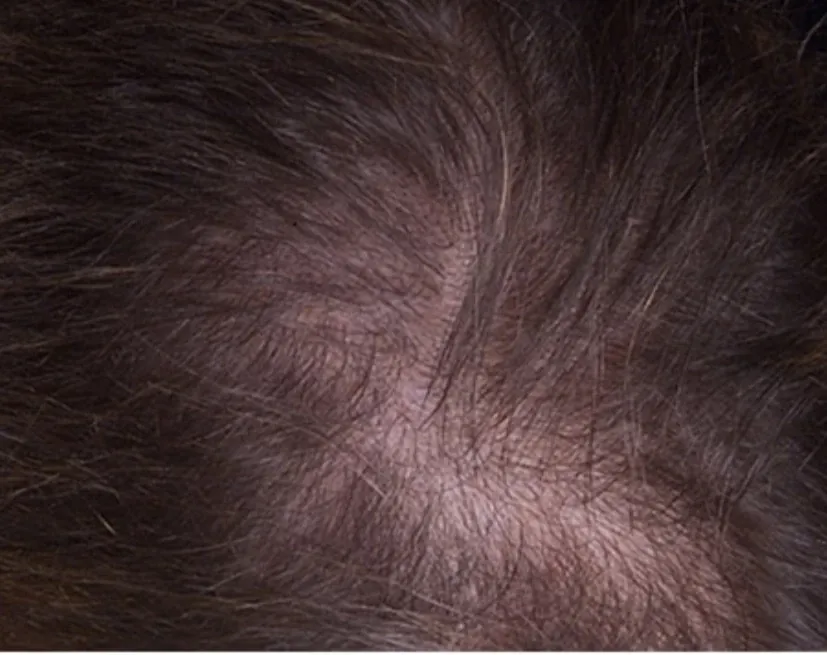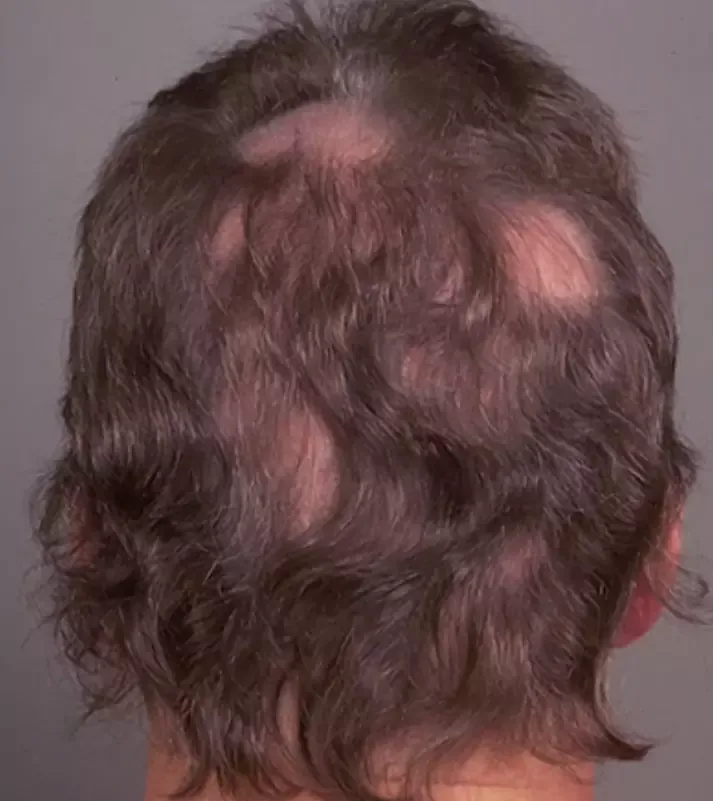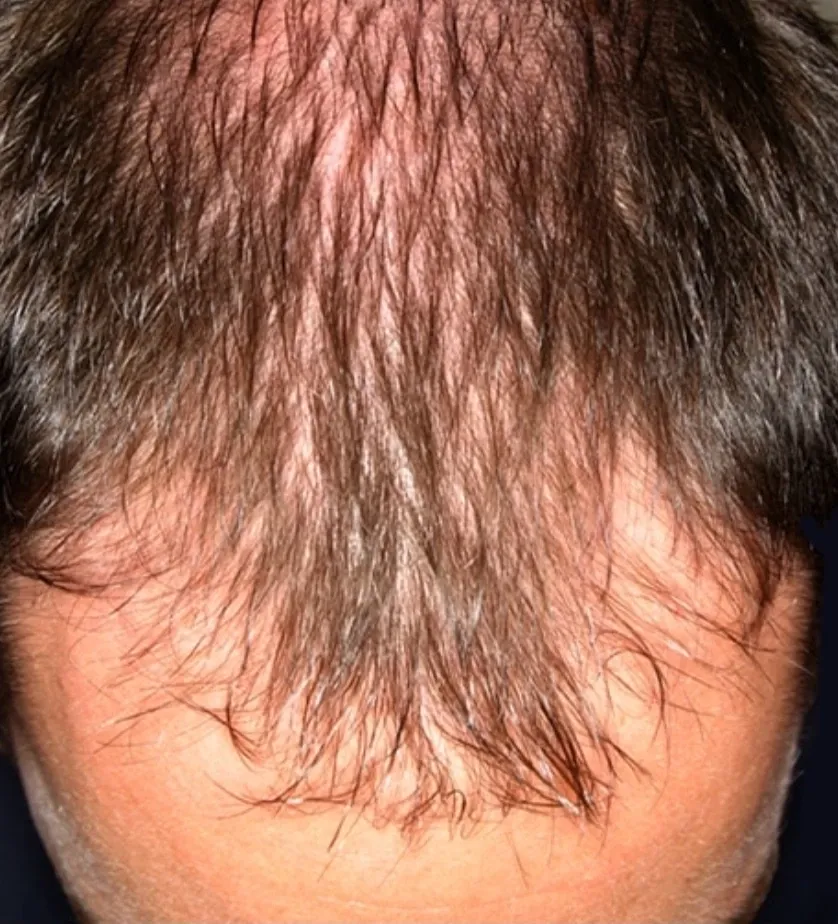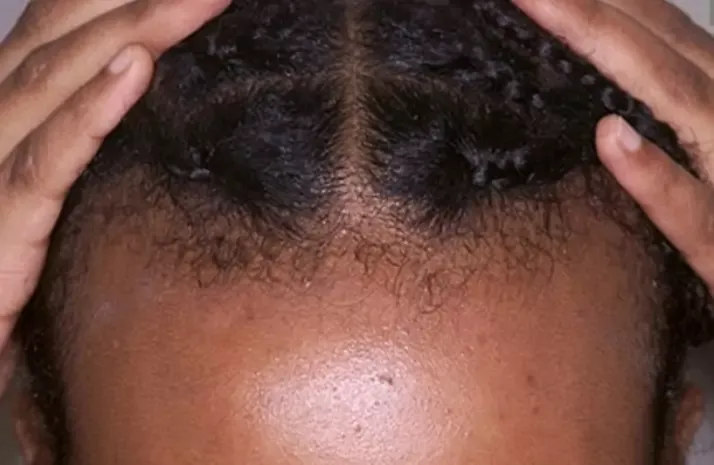Hair loss is also known as alopecia is a problem faced by millions of men and women across the world. Hair fall can be a very distressing problem and can make you feel depressed. Hair fall can be due to many reasons. Knowing the root cause of your hair loss will help you deal with your problem more efficiently.
Following are some of the reasons that may be the reason for your hair fall:-Hair fall can be a hereditary problem for some people.
Hormonal imbalance can sometimes lead to hair loss.
Stress can be a major cause of hair loss.
Frequent use of hair styling tools can make your hair fall out faster.
Taking steroids like birth control pills can often lead to uncontrolled hair fall.
A diet with insufficient amount of protein can trigger hair loss.
7. Radiation therapy of the head:
Hair may not grow back as before. If the cause is radiation therapy.
Symptoms of hair loss
Gradual thinning on top of the head.
 |
| Hair loss for women |
Circular or patchy bald spots.
 |
| Male pattern |
Some people experience smooth, coin-sized bald spots. This type of hair loss usually affects only the scalp, but it sometimes occurs in the beard or eyebrows as well. In some cases, your skin may be itchy or sore before the hair fall.
Sudden loosening of hair.
Full-body hair loss.
Patches of scaling that spread over the scalp.
Hair loss treatments
Hair loss treatment for women
Medications are the most common treatment for hair loss in women. Some of which have been included as follows: But keep in mind that you must consult your doctor before starting any treatment.
The drug was initially introduced as a treatment for high blood pressure, but people who noticed it were growing hair in places where they had lost it. Research studies confirmed that minoxidil applied directly to the scalp can stimulate hair growth.
As a result of the studies, the FDA originally approved over-the-counter 2% minoxidil for the treatment of hair loss in women. Since then a 5% solution has also become available when a stronger solution is needed for a woman's hair loss.
Side Effects and Concerns: Minoxidil is safe, but it can cause unpleasant side effects in addition to alcohol-related skin irritation. Sometimes the new hair differs in color and texture from the surrounding hair.
Another risk is hypertrichosis -- excessive hair growth in the wrong places, such as the cheeks or forehead. (This problem is more likely to occur with a stronger 5% solution.)
Since the patent on Rogaine (the brand-name version of minoxidil) has expired, a number of generic products are available. They all contain similar amounts of minoxidil, but some include additional ingredients, such as herbal extracts, that can trigger allergic reactions.
Anti-androgens:-
Androgens include testosterone and other "male" hormones, which can accelerate hair loss in women. Some women who do not respond to minoxidil may benefit from the addition of the anti-androgen drug spironolactone (Aldactone) for the treatment of androgenetic alopecia. This is especially true for women with polycystic ovary syndrome (PCOS) because they tend to make extra androgens.
The doctor will usually prescribe spironolactone along with an oral contraceptive for women of reproductive age. (A woman taking one of these drugs should not become pregnant because they can cause genital abnormalities in a male fetus.) Possible side effects include weight gain, decreased libido, depression, and fatigue.
Iron supplements:
Iron deficiency can be the cause of hair loss in some women. Your doctor may test your blood iron levels, especially if you are a vegetarian, have a history of anemia, or have heavy menstrual bleeding. If you have an iron deficiency, you will need to take a supplement and this can stop your hair loss. However, if your iron levels are normal, taking extra iron will only cause side effects such as upset stomach and constipation.
Hair transplantation:
Hair transplantation, a procedure used in the United States since the 1950s to treat androgenetic alopecia, which involves removing a strip of scalp from the back of the head and using it to fill in bald patches . Today, 90% of hair-transplant surgeons use a technique called follicular unit transplantation, which was introduced in the mid-1990s.
During this procedure, surgeons remove a narrow strip of scalp and divide it into hundreds of smaller grafts, each containing only a few hairs. Each graft is placed in a slit in the scalp made by a blade or needle in the area of the missing hair. Hair grows naturally in this way, in small clusters of one to four follicles, called follicular units. As a result, the graft looks better than the "plug" of larger hairs, which are attached to the hair transplant.
Hair care
1. Try Coloring for Hair Loss:
2. Use Volumizing Products
3. Shampoo and Condition Your Hair When Dirty
4. Find a Style That Suits Fine Hair
5. Get a Permanent Wave
Adding volume to permanently textured hair can help – but hair should be healthy, not dry or brittle. Only a gentle body wave is recommended, as tight waves can damage the hair. Because the chemicals in permanents are harsh, a permanent should only be a last resort for people with fine hair.
Again, make sure a professional stylist gives you permanent instructions so the hair doesn't get damaged. If you have any concerns or queries, you can always consult an expert and get your questions answered! And Share your problem with us by commenting.









If you liked the information of this article, then please share your experience by commenting. This is very helpful for us and other readers. Thank you